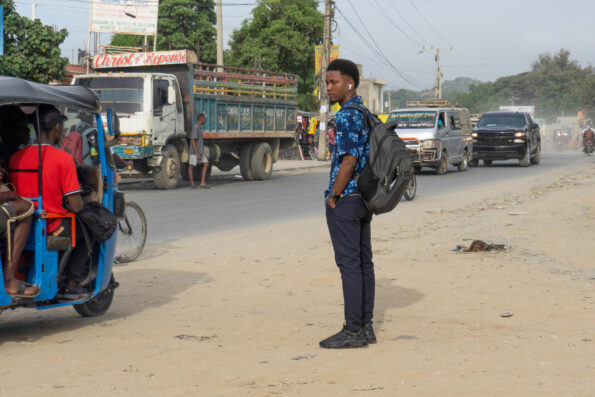
Yam Kumari Kandel, GPJ Nepal
Rolma, 35, sits with her two daughters, Anuwar Kalma (left), 6, and Musalli (right), 4, in Kapan, Nepal. The family came from Myanmar five years ago, but they haven’t found the security they need in Nepal.
KAPAN, NEPAL— Five years ago, Rolma, 35, left Myanmar. Rice, potatoes and sugarcane grew in the fields there. She weeps at the memory.
“Here, I do not have tea anymore,” she says. “I do not eat rice and I have not seen meats.”
Rolma and her family are among about 140 Rohingya refugees in Nepal, all of whom fled ethnic cleansing in Myanmar, a country formerly known as Burma.
INSIDE THE STORY: Learning about the situation of Rohinya refugees in Nepal means overcoming barriers, including language and expectations. But a GPJ reporter also found connections. Read the blog.
There, members of the Muslim minority group are denied citizenship, despite having ancient roots in the majority-Buddhist country. An estimated 168,000 Rohingya have fled Myanmar since 2012, many to Bangladesh and Malaysia. That number includes the people who are formally registered as refugees as well as others who are known to have left, but refugee advocates say the real count is likely much higher. (Read our story why it’s tough to get an accurate number here.)
The Rohingya who remain in Myanmar face extreme violence from armed forces and local people, according to a February U.N. report. Sadistic killings of people of all ages, including babies, and sexual violence are occurring at high rates. Starvation is common.
But life in Nepal hasn’t offered security. Rolma, who asked that her full name not be used to protect her security, lives with her family on about 200 Nepali rupees (about $2) per day, which her husband earns through under-the-table labor as a construction worker.
That’s enough money for one meal per day for the couple and their four children.
The family came to Nepal via Bangladesh and India. They’re settled here without visas or other formal documents papers. Nepal, which is not a party to the U.N.’s 1951 refugee convention or related agreements, is not obligated to offer much support to refugees living within its borders. The country tacitly allowed more than 100,000 refugees from Bhutan to settle in Nepal in the early 1990s, but most have since been resettled elsewhere. Those Bhutanese refugees were not allowed to leave the camps where they lived and weren’t allowed to hold formal jobs. The refugees who lived in urban areas were considered by the Nepalese government to be there illegally.



“We have not chased the Rohingya away from Nepal [only] because of our Hindu tradition that guests should be provided hospitality,” says Kosha Hari Niraula, an undersecretary at the Local Administration Section of the Ministry of Home Affairs.
That’s a common sentiment in Asia, where numerous countries have declined to sign the refugee convention. (Read our story about Rohingya refugees in Jammu, India here.)
There are ongoing efforts to find third countries for refugees in Nepal, Niraula says.
The U.N. provides assistance to about 530 asylum-seekers and refugees, including Rohingya refugees, in Nepal, says Deepesh Das Shrestha, a local UNHCR spokesman.
At first, UNHCR, the U.N.’s refugee division, gave 5,000 rupees (about $48) per month to the head of each refugee family, and a lesser amount to the other members, Shrestha says. Those payments ended in 2015 due to budget constraints.
That money was desperately needed, says Rolma, who has emerged as a community leader because she can speak Nepali.
“Many Rohingya have been cheated in their workplaces, but they do not go to the police office to complain due to the fear of getting arrested,” she says.
Rolma’s children attend the nearby Nepal Charter School, where UNHCR covers their school fees.
But the family needs food just as badly as the children need education, Rolma says. The entire Rohingya community relies on food donations. When they don’t receive anything, they go hungry.
Maamod Aayas, Rolma’s 40-year-old husband, says construction foremen refuse to pay him once they know he’s in Nepal illegally.
But even those hardships pale in comparison to what the Rohingya would face had they remained in Myanmar.
Zubair,a 36-year-old who asked that his last name not be used for security reasons, worked as a teacher in a madrasa, an Islamic school, in Myanmar for 14 years. The school was torched by an anti-Muslim mob, along with a mosque and Muslim settlements.
He and his wife fled the country and ended up in Nepal in 2015. He says he won’t return unless he receives an invitation from Myanmar’s government confirming that the Rohingya would be welcome there.



Sagar Ghimire, GPJ, translated this story from Nepali.







